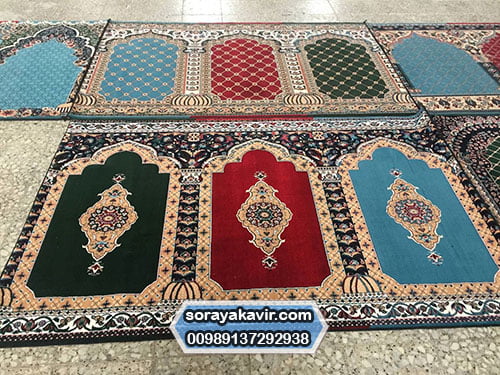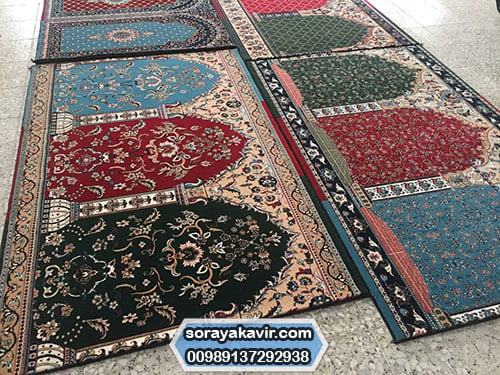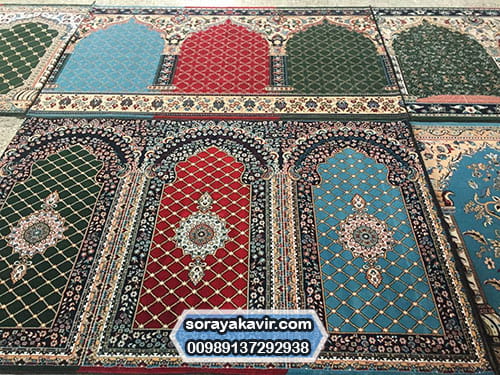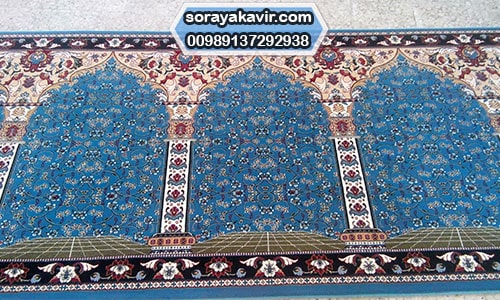Prayer rugs hold a venerable place in the rich tapestry of Islamic culture, embodying a tradition that spans centuries. These intricately designed carpets are more than just ornamental floor coverings; they symbolize a deep connection to faith and serve as an integral part of daily worship for millions of Muslims around the world.
The origins of prayer rugs can be traced back to the early days of Islam, with historical references dating as far back as the 7th century. Initially, Muslims would perform their prayers on simple mats or directly on the ground. However, as Islam spread across diverse cultures and regions, the need for a designated space for prayer became apparent.
The evolution of prayer carpet for mosque is closely intertwined with the development of Islamic art and craftsmanship. Early examples were marked by geometric patterns and basic motifs, often inspired by elements found in nature. Over time, as Islam encountered different civilizations, prayer rug designs became more intricate, incorporating a kaleidoscope of colors, symbols, and regional influences.

Significance of Prayer Rugs in Islamic Culture
Islamic carpet for mosque are not merely decorative items; they are woven with spiritual intent. Each rug becomes a sacred space, a personal sanctuary for the believer to connect with the divine during daily prayers. The intricate designs on the rugs often serve as a visual guide, aligning the worshipper with the spiritual geometry of Islamic art.
Furthermore, the act of laying out a prayer rug is a symbolic gesture, creating a dedicated space for communion with the divine. It signifies a moment of mindfulness, a pause amidst the chaos of daily life to turn one’s attention inward and offer prayers as an act of devotion.
The primary purpose of a this rug is to provide a clean and defined space for Muslims to perform their ritual prayers, known as Salah. Salah is one of the Five Pillars of Islam, emphasizing the importance of daily communication with Allah. The prayer rug, in this context, becomes a focal point for this intimate encounter with the divine.
The rug acts as a physical and symbolic boundary, demarcating a sacred space for the worshipper. It serves as a reminder of the direction of Mecca, the holy city towards which Muslims turn during their prayers. This directional alignment, known as Qibla, is a fundamental aspect of Islamic prayer.
In essence, mosque carpets are not just accessories; they are an integral part of a Muslim’s daily spiritual journey. As believers lay out their prayer rugs, they step onto a canvas woven with centuries of tradition, connecting not only with the divine but also with a shared heritage that spans continents and cultures.

Traditional Designs and Symbols on Prayer Rugs
Prayer carpets, beyond their utilitarian purpose, are adorned with a mesmerizing array of traditional designs, colors, and symbols. Each element woven into these intricate carpets tells a story, reflecting not only the cultural richness but also conveying deep spiritual meanings. Let’s delve into the captivating world of traditional patterns and symbols found on prayer rugs.
Exploration of Traditional Patterns, Colors, and Symbols
Traditional patterns on masjid carpets are a testament to the diversity of Islamic art and the cultural influences that have shaped it over the centuries. Geometric shapes, floral motifs, and intricate arabesque patterns are common, reflecting the Islamic prohibition of depicting living beings in religious art. These designs, often arranged in a meticulously symmetrical manner, create a sense of order and balance.
Colors play a crucial role in prayer rug design, with each hue holding symbolic significance. Earthy tones such as green and brown are often associated with nature and the earthly realm, while vibrant blues and reds may symbolize the divine and transcendence. Gold, often used sparingly, represents spiritual wealth and enlightenment.
Symbols on prayer carpets vary widely, and their meanings can be deeply nuanced. Common symbols include the mihrab (prayer niche), representing the direction of Mecca; the minbar (pulpit), symbolizing the position of the imam; and the lamp, signifying the eternal light of Allah. These symbols, combined with geometric patterns, create a visual language that speaks to the devout on a spiritual level.

Symbolic Meanings Behind Common Motifs of Prayer Rugs
Every motif on a prayer carpet roll carries symbolic weight, offering layers of meaning to those who understand the visual language. The archetypal symbol of a tree, for instance, may represent the Tree of Life, embodying growth, connection, and the eternal cycle of life and death. Stars and crescent moons, often present in prayer rug designs, are iconic symbols of Islam, representing guidance and the lunar calendar.
Geometric patterns, such as the ubiquitous eight-pointed star, hold mathematical precision that reflects the order and harmony inherent in the cosmos. These patterns, combined with intricate arabesques, can evoke a sense of the infinite and the interconnectedness of all things.
Animals and plants, when depicted, often carry symbolic meanings. Birds may symbolize the soul’s journey, while flowers and vines can signify growth, beauty, and the transient nature of life. Understanding these symbols adds a deeper layer to the act of prayer, as worshippers find themselves immersed in a visual and spiritual dialogue with the divine.
Choosing the Right Prayer Rug
Selecting the right Iranian Persian masjid carpet is a deeply personal endeavor, as it involves finding a piece that resonates with individual preferences, needs, and the spiritual journey of the worshipper. Here are essential factors to consider and practical tips for choosing the perfect prayer carpet for personal use.
Factors to consider when selecting a prayer rug:

Material and Quality
Assess the material of the prayer rug, considering factors such as durability, softness, and ease of cleaning.
Examine the overall quality of the rug, including the tightness of the weave and the precision of the design.
Size and Shape of Prayer Rug
Choose a size that suits your prayer space and provides enough room for comfortable prostration.
Consider the shape of the rug – rectangular, square, or round – based on personal preference and the layout of your prayer area.
Design and Pattern of Mosque Carpet
Explore traditional and modern designs to find a pattern that resonates with your aesthetic sensibilities.
Consider the symbolism behind different motifs, choosing designs that align with your spiritual inclinations.
Color Palette of Prayer Rugs
Reflect on the symbolic meanings of colors in Islamic art and choose hues that evoke a sense of serenity and spiritual connection.
Consider the overall color scheme of your prayer space when selecting a rug.

Portability and Storage
If you travel frequently, opt for a prayer rug that is lightweight, foldable, and easy to carry.
Ensure that the rug can be conveniently stored when not in use.
Cultural Influences
Explore Musalla masjid carpet designs that reflect your cultural background or personal heritage.
Consider regional variations in prayer rug styles and choose one that resonates with your cultural identity.
Budget
Determine a budget for your prayer rug, considering the quality, material, and design.
Keep in mind that a prayer carpet is a long-term investment, and spending a little more for a durable and meaningful piece may be worthwhile.
